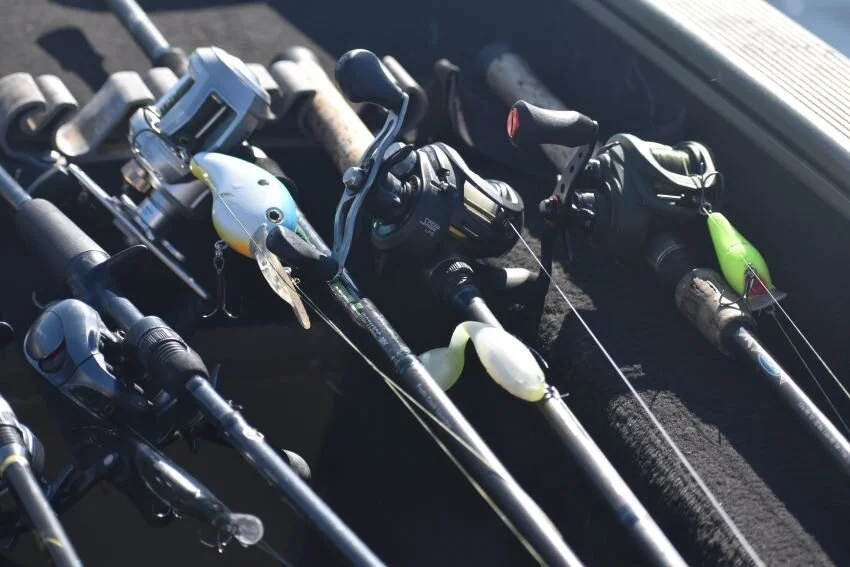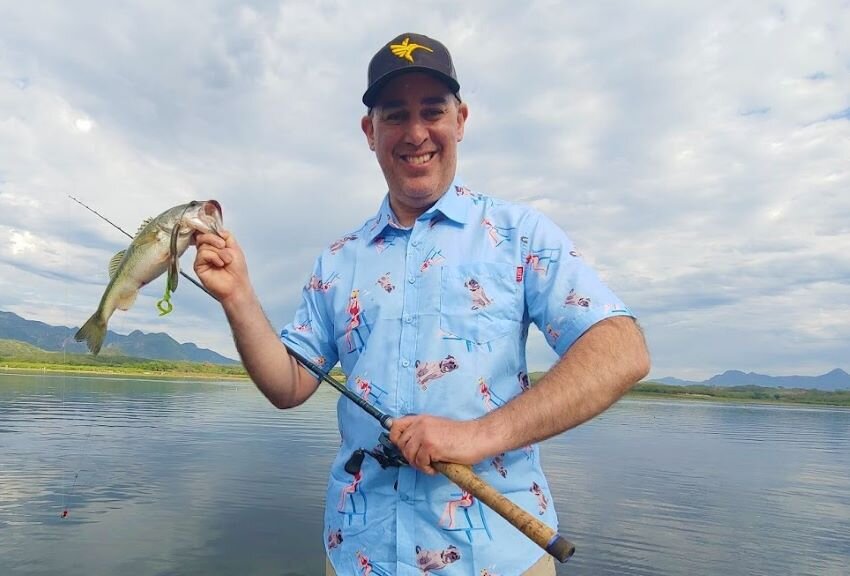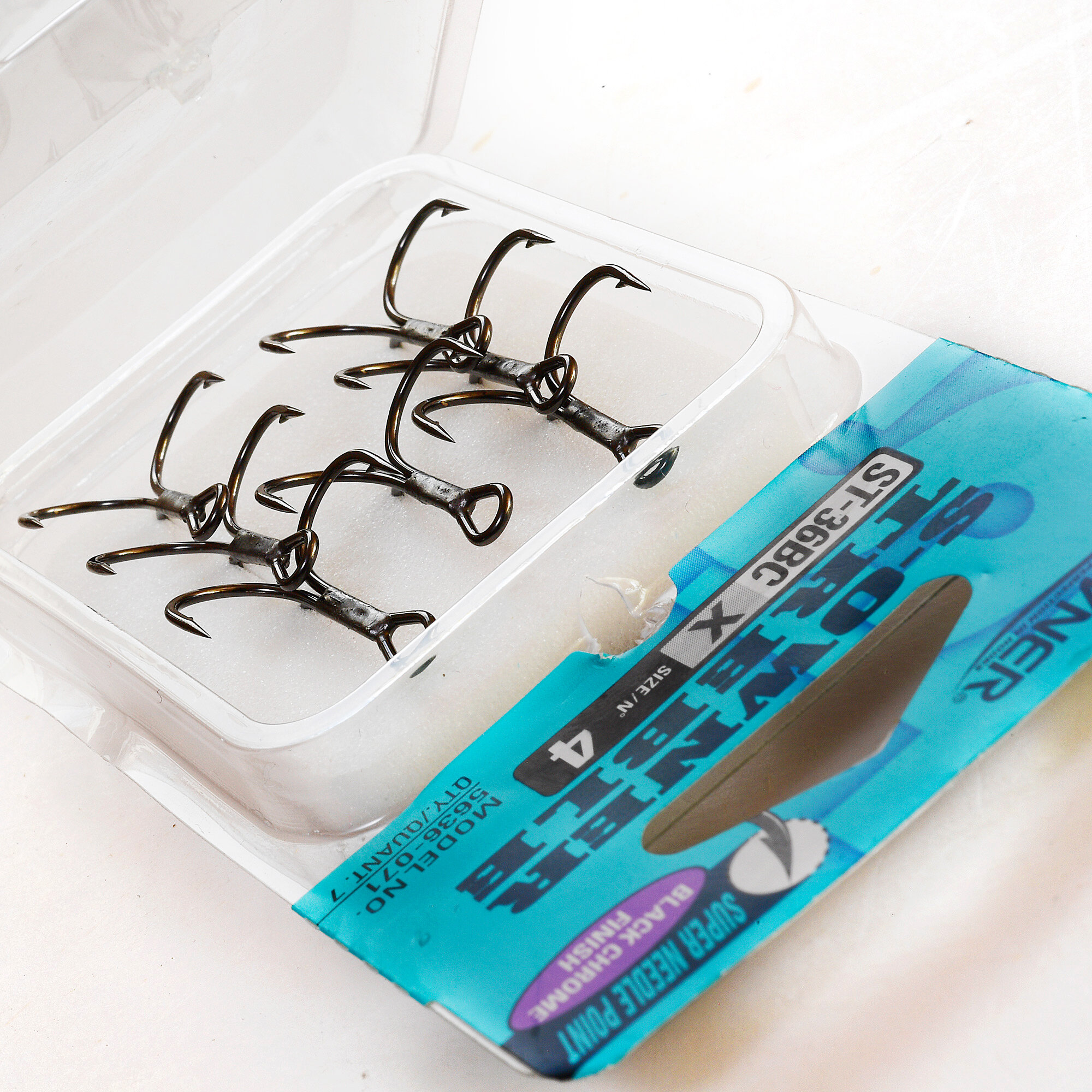Keeping in Touch at El Salto
One of Lake El Salto’s best features is also often one of its most maddening: the sheer variety of ways that you can catch big bass down there. On our most recent trip, we caught fish that were ankle deep, and others that were 30 feet deep, and in every case both slow-moving and fast-moving lures came into play.
For an ADD-afflicted tackle junkie like me, that presents a hellish temptation. Rather than dialing in a simple singular pattern, I want to catch them as many ways as possible. Can you blame me? I’d never caught fish on a 10XD until I tried it in Mexico, and now it’s one of my favorite bites. On this last trip I caught my first flutter spoon fish of my life, and I fell in love with the techniques. Part of the fun is catching them in ways that are outside of your “normal” routine.
However, when you get outside of your comfort zone, in some cases you increase your chances of failure. You may not know how a spoon or a 10XD or a Scrounger Head is supposed to feel under the water. You may make mistakes when setting the hook or fighting the fish. Because of that, I’m going to make some recommendations below that sit outside of tackle orthodoxy. I expect to get criticized for them and I can live with that if it means more fish in the boat.
In each case, what I’m recommending is that you take steps to gain better feel and better control over your lures. These fish are strong, they’re hungry and they’re often aggressive, but they’re not necessarily line- or lure-shy. Use that to your advantage.
Bigger Storms
The Storm Wildeye Shad swimbait is a Mexican stalwart, the perfect blend of economy and liveliness. At only a buck or two apiece, as opposed to the triple-digit bills associated with handmade swimbaits, you shouldn’t hesitate to throw them into the gnarliest trees or rocks. If it gets irretrievably hung up, you can break them off and tie on another. Not a big deal. I haven’t had the balls to try the 9-inch version, and while I’ve caught some fish on the 6-inch, I tend to reach for the smaller models on many occasions since El Salto’s fish often dine on surprisingly small forage.
That leaves the 4- and 5-inch models as your go-to baits. When the fish are being finicky, your natural inclination might be to utilize the smaller of the two, but I’d recommend sticking with the 5-incher as long as possible. Why? The former weighs 7/16 ounce and the latter weighs 5/8 ounce, a difference of only 3/16, but the difference in feel on regular bass tackle is enormous. While schooling fish might not care where in the water column your swimbait swims, oftentimes you won’t get bit unless your bait is bumping bottom, and the lighter version is tough to keep down on even a moderate retrieve. It’s also tough to tell what it’s doing, especially in water over 20 feet deep. For those of us who are not swimbait experts, it’s simply easier to feel what the 5-inch model is going, so use it until the evidence indicates that you need to downsize.
Cranking Rope
This goes against just about everything I’ve ever read, but when I’m cranking the really big diving plugs at El Salto, I use 30- to 50-pound braid instead of fluorocarbon. At home on the Potomac, I rarely fish deeper than about 6 feet, and on some of our local lakes I may extend that range a bit, but I’m far from a deep cranking expert. With a Fat Free Shad or a 6XD I can still get away with fluoro, but with the 10XD it feels like braid is superior in almost every way – longer casts, quicker diving, more line capacity. The only downside, it seems, is that you’ll need to learn how to finesse your bait through wood to avoid getting hung up. The bow-and-arrow trick will still work to free your snagged lures, but in my experience not quite as much as with fluoro or mono.
As with the swimbait, staying in touch with the cover and structure is usually the key to making oversized cranks excel. To be honest, I’m not sure how deep I can get a 10XD on an extra-long cast – somewhere in the 20- to 25-foot range, I suppose. I do know, on the other hand, that when the crank is just ticking the bottom, and the occasional stump or boulder, that’s when I most expect to get bit. Using the braid helps me feel those bottom composition changes, especially when I have a lot of line out and the wind is blowing. I’m convinced that the fact that it’s telegraphing my lure’s actions up the line helps me catch more fish on a technique that is not within my wheelhouse.
Spin to Win
I’ve written before about the value of the dropshot (or, in this case, the “powershot”) in Mexico, and on this last trip we really got a good showing of how deadly it can be – along with how it’ll elevate your blood pressure. My friend Aaron Rygas caught a then-PB 8-04 on a dropshotted straight-tail worm on Day One, then beat that mark by over a pound on Day Two (on a crankbait). My friends Kyle Patrick and Paul Pagnato also caught a lot of solid fish on dropshots, and Paul had his heart broken by a couple that got away. To his credit, as most of us were focused on offshore structure, he and Hanna got onto a pattern of finding isolated hardwood trees on channel drops and sending the dropshot rig straight down the trunk. That was the only way to get bites. Unfortunately, when that’s your game, you know that you’re going to lose some giants in the many branches on the way up.
The key was twofold: the straight drop and a laser-quick extraction. I used my standard medium-heavy baitcasting gear with 17-pound line. I’ve never used spinning tackle at El Salto, but I think next year that’ll change, because that should make the straight drop much easier, meaning I won’t have to peel off line to get the proper fall. I am going to bring my heaviest 7-foot spinning rod, a 4000-sized reel, and fish 30-pound braid to a 17- or 20-pound test leader. The one good thing about COVID is that it has given me time to substantially improve my FG knot, and this will be the true test of its holding power.















